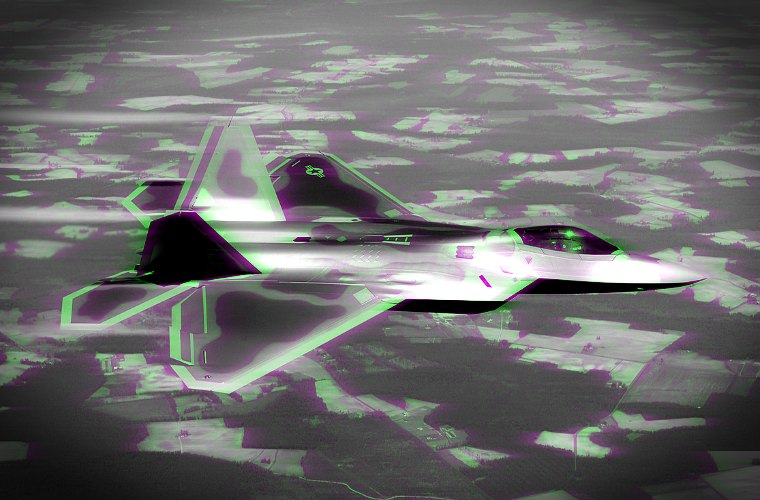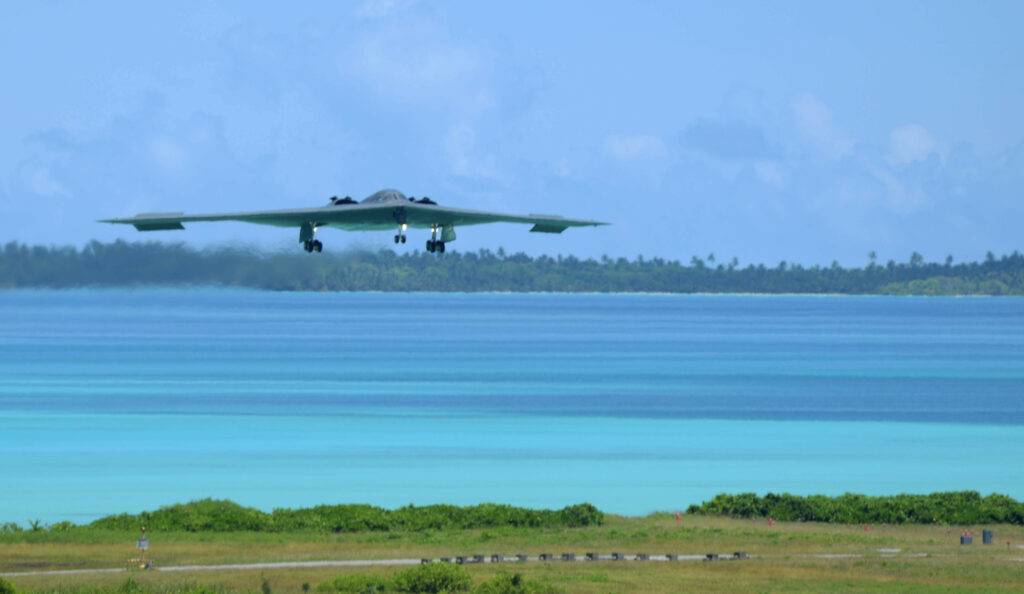
Since the dawn of radar, military aircraft designers have tried to mask their planes from detection using a combination of radar-reflecting shape and radar absorbing materials. This stealth aircraft technology is still evolving, with increasingly advanced aircraft employing these techniques across a range of platforms.
In an attempt to improve on current materials, which notoriously have several drawbacks, a team from the North Carolina State University has developed a new ceramic-based coating that not only offers dramatic improvements in radar invisibility but will likely result in a whole host of improvements to the aircraft’s overall performance.
“If we get the support we need to scale this up, aircraft manufacturers will be able to fundamentally redesign stealth aircraft,” said Chengying “Cheryl” Xu, whose NC State research team developed the new, stealthy aircraft skin in a press release announcing their results. “The material we’ve engineered is not only more radar-absorbent, but it will also allow the next generation of stealth aircraft to be faster, more maneuverable, and able to travel further.”
Background: Making of Stealth Aircraft Invisible
Presently, stealth aircraft like the infamous F117-A Stealth Fighter or the B2 “Stealth” Bomber are already covered in a sheath of radar absorbing polymers that, according to the NC State team’s research, typically absorb between 70% and 80% of the energy from tracking radar. This makes them difficult to discern from birds and other smaller airborne objects, especially when combined with shapes and designs that reflect the remaining radar energy away from detectors.

A B-2 Spirit from Whiteman Air Force Base, Mo., lands at an undisclosed
location in the U.S. Pacific Command area of operations. The Air Force’s
new B-21 will complement and eventually replace America’s first stealth
long-range bomber which entered service in 1993. (Image Credit: U.S.
Air Force photo by Senior Airman Joel Pfiester).
Still, these materials have some drawbacks, with two right at the top of the list.
First, they are relatively fragile and can be easily damaged by exposure to salt, moisture, or pretty much any abrasive materials. In some cases, this means the stealth material is rendered less effective, and in others, such damage may cause that material to flake off completely.
Second, most advanced, stealthy polymers degrade at temperatures above 250 Celsius, a heat level not uncommon to aircraft engines and high-performance control surfaces.
“There are two places on a jet that can get particularly hot,” the press release announcing the results states. “For supersonic aircraft, one of those places is the leading edge of the wings. As a wing’s edge strikes oncoming air at high speeds, it generates a tremendous amount of friction. This can create hot spots on the wing’s edge “in excess of 250 C.”
According to the research, this extreme heat has forced designers to adapt the shape of the wing, often resulting in reduced stealth, maneuverability, and even range.
As previously noted, heat damage also comes into play at the rear of the plane, where exhaust from the engines consistently reaches temperatures above 250 C. Until now, designers had to compensate by adding extra-long exhaust nozzles to direct that heat away from the craft. Unfortunately, like the adaptations made to the wings, these changes also adversely affect the aircraft’s performance.
Analysis: How to make Stealth Aircraft Invisible and Hypersonic
With all of these limitations in mind, and with support from the Office of Naval Research, the National Science Foundation, and the State of North Carolina, Xu and her NC State team looked into a category of materials already well-known for their ability to manage extreme heat; ceramics. Surprisingly, they found that these materials were also ideally suited for absorbing radar.
“For one thing, lab testing finds that the ceramic is more radar absorbent than the existing polymers, being able to absorb 90% or more of the energy from radar,” the press release notes. “It is, in effect, much harder for radar to ‘see.'”
With results described in detail in a trio of studies published by the NC State team in the journal ACS Applied Materials & Interfaces, the researchers point out that ceramics are also much more resistant to the harmful effects from the air, water, heat, and even things like sand, which can all do significant damage to current polymer-based materials. They also note that the ceramic material they used “retains its radar-absorbent characteristics at temperatures as high as 1,800 C (and as cold as -100 C).”
When highlighting the speed of application for their material by stating that “this process takes one to two days,” Xu also highlighted the ease of application. In short, a liquid ceramic precursor is sprayed onto the surface of the aircraft. Then once that liquid precursor is exposed to ambient air, it undergoes a series of chemical reactions that convert it to the solid ceramic material.
Late last year, The Debrief reported that civilian contractor Battelle was also working on a ceramic-based approach for coating hypersonic missiles that can achieve temperatures as high as 2,760 Celsius, or ten times hotter than the temperature needed to melt most stealth materials. That report also explained how “the breakthrough material is said to be twelve times more effective at dissipating heat than other currently available materials.”
Outlook: The Future of Hypersonic Stealth Aircraft
Thus far, the NC State team’s process has only been applied in a laboratory setting, and due to their limited budget, they have yet to try it on a full-scale aircraft. But according to Xu, that may be about to change.
“We recently secured funding from the Air Force Office of Scientific Research that will allow us to produce and test much larger samples, so that’s what we’re working on now,” she said. “Ultimately, we are hoping to work with industry partners to scale this up and begin work on the next generation of stealth aircraft.”
Time and more testing will determine if Xu and her team’s process makes it all the way to combat vehicles. Still, given the new funding and the immediate need by 21st-century military forces, it may only be a matter of time before ceramic-covered jets are flying overhead.
Christopher Plain
No comments:
Post a Comment
Note: Only a member of this blog may post a comment.